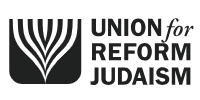Reform Movement – Conversion Programs
Preparation Process: The norm in the Reform movement (in the US) is that students will complete an Introduction to Judaism class (offered in many congregations as well as online) and engage in Jewish practices in home and communal contexts for about a year.
Ritual Requirements: The norm is that Reform converts will appear before a Bet Din and visit the mikveh, but exceptions are sometimes made. Male converts1 may be offered the chance to be circumcised (or to do the hatafat dam brit ritual), but most Reform rabbis will not require it.
Costs: Normally, students will need to pay for the Introduction to Judaism class (which can range from $100-595 depending on the community – or included free to members of the congregation) and may also have to pay a fee for the use of a mikveh.
Can this program be done online: The introduction to Judaism class can be done online, but some rabbis will insist on converts having some degree of involvement in a local Jewish community. If one wants a reform conversion that is completely online, working with a Reform rabbi through Darshan Yeshiva maybe a good option.
Is this program bi-religious friendly? No. Most Reform rabbis and Bet Din will specifically ask converts whether they will practice Judaism to the exclusion of all other religious traditions.
In what movements will this conversion be accepted?:
- Humanistic: Yes
- Reform: Yes
- Reconstructing Judaism: Yes
- Renewal: Yes
- Conservative/Masorti: Possibly, assuming that rituals such as Bet Din and Mikveh were done.
- Orthodox: No
- Post-Denominational: Likely yes
Notes/Comments: The author of this article participated in a Reform temple’s “Introduction to Judaism” class and was impressed with the course content.
Also, whether one has converted or not, most Reform synaoguges/temples accept non-Jewish members.
- For discussion of the issues regarding circumcision for transgender men and transmasculine people, see this article from Svara.


